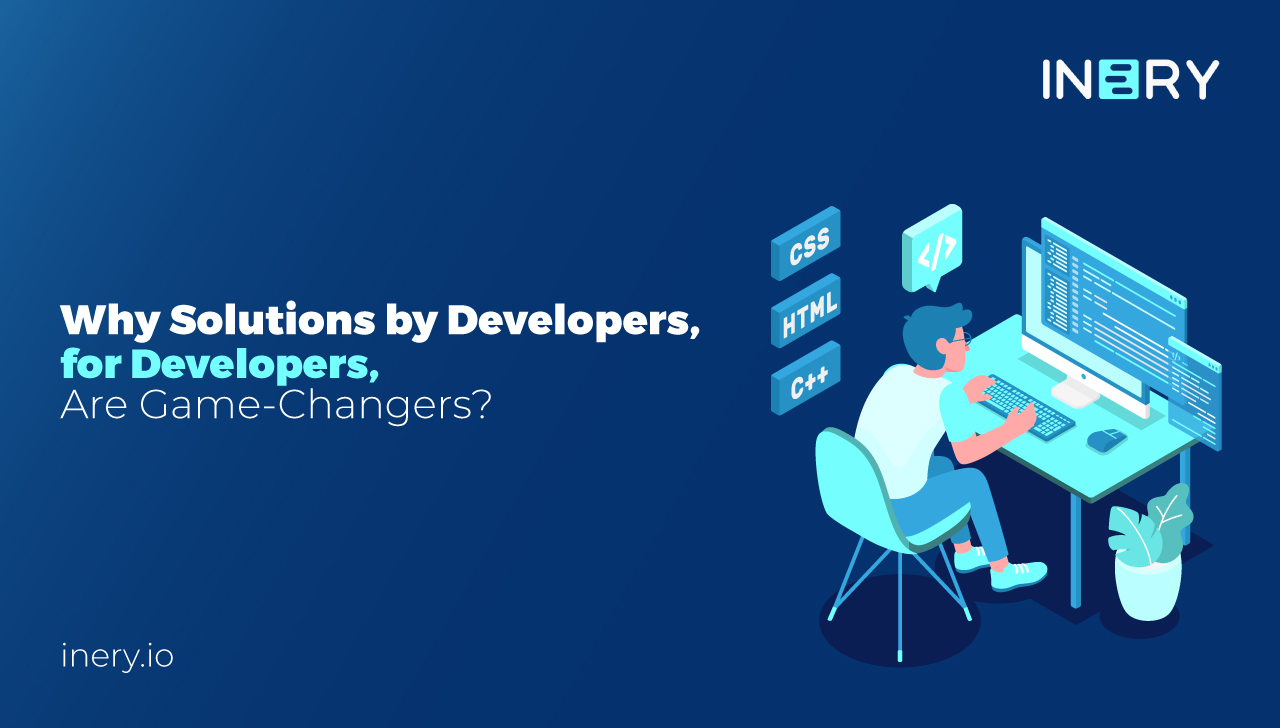Some products are polished answers to questions nobody in the trenches is asking. They demo well, they look tidy on a roadmap, and then they hit production and promptly start inventing new kinds of pain. Nowhere is that disconnect clearer than in tooling for engineers. When the people designing data platforms, runtimes, or orchestration layers haven’t actually shipped, scaled, debugged at 3 AM, or migrated a schema under pressure, the result is almost always the same: accidental complexity, fragile abstractions, and costs (time, money, cognitive load) quietly transferred to the developers who have to keep the thing alive.
This isn’t a purity test about who writes code and who doesn’t. It’s about whether the people shaping the system understand the failure modes, the operational realities, the messy human parts of distributed work: partial failures, skewed clocks, regulation that doesn’t care about your architecture diagram, or the fact that “we’ll fix it in a patch” means nothing when your data is already wrong in six regions.
The Cost of Software That Solves Imaginary Problems
When solutions are drafted far from production reality, you tend to see the same patterns repeat. Configuration lives half in a GUI, half in environment variables, and half in a hidden JSON blob nobody remembers exists. Telemetry is bolted on after teams start filing tickets. APIs are inconsistent, undocumented, or auto‑generated to the point of absurdity. Upgrades feel like roulette. Local development is an afterthought. And everything “scales” in the press release, but not when your traffic pattern isn’t textbook.
The bill for those choices doesn’t arrive in a single line item. It shows up as glue code, manual runbooks, and incident retros that point to “tooling gaps,” institutional fatigue, and eventually a quiet, grinding loss of velocity. The damage is operational, cultural, and strategic, as well.
When Developers Build For Developers, The Floor Gets Higher
Look at the tools engineers actually defend with passion: Git, PostgreSQL, Kubernetes, Terraform, Prometheus, Grafana, Sentry. These weren’t blue-sky ideations of what the market might want. They were born from lived constraints: branching strategies for a codebase the size of a small country; orchestration for services operating at planetary scale; observability born of on‑call misery. They optimize for the things that truly compound: predictability, correctness, debuggability, composability, and honest trade‑offs.
You can usually tell a platform was designed with that mindset because its concepts map cleanly to how engineers think. The primitives are few and sharp. Config is text and versionable. Documentation explains failure, not just success. There’s a CLI because inevitabilities happen at 2 AM. Observability isn’t a premium SKU; it’s the minimum viable respect for the team running it.
Real Examples, Real Consequences
Think about the waves of “low-code data platforms” that promised to eliminate the need for engineers. Many organizations adopted them to get dashboards faster, and then discovered their pipelines were black boxes, schema drift was silently corrupting downstream reports, and rollback meant opening a support ticket. Or consider security products that centralize everything behind a single pane of glass but make it practically impossible to prove data integrity across jurisdictions or demonstrate lineage to an auditor without weeks of manual reconciliation.
Contrast that with ecosystems that grew from the inside out. The reason developers trust PostgreSQL isn’t nostalgia; it’s decades of people who obsess over transactions, isolation, and extension hooks so you can adapt safely. The reason infrastructure teams leaned into Kubernetes wasn’t hype; it was the relief of finally getting tooling that matched how they already thought about desired state, reconciliation, and failure as a first-class citizen.
What Actually Changes When Engineers Shape The Data Layer
When developers design data infrastructure for other developers, a few things consistently happen:
The mental model is coherent. You don’t need an internal priesthood to explain how it really works.
Guarantees are explicit. You know what’s consistent, what’s eventual, and what’s never guaranteed.
Schema evolution isn’t a cliff. Rolling forward and back is a process, not a gamble.
Identity, permissions, and auditability aren’t extras. They’re core to the model.
Observability is built in. You can see, measure, and prove what the system is doing, without reverse‑engineering it.
That foundation matters most when the stakes are high: cross‑border replication under regulation, immutable histories you can verify years later, disaster recovery that actually holds under real RTO/RPO targets, or multi‑tenant environments where isolation is provable, not assumed.
Why This Principle Sits at the Heart of Inery
Inery’s entire approach to distributed data management is anchored in that belief: the only way to build infrastructure teams that can trust is to put engineers, with real scars, in charge of how it’s shaped. The platform is engineered to solve the problems that appear when data is both mission‑critical and collaborative:
Inery separates metadata from raw data, so integrity guarantees don’t drag performance into the ground. It supports both relational and non‑relational models, so architects don’t have to contort use cases to fit a single paradigm. It bakes in tamper‑evident, append‑only histories so you can prove what changed, when, and by whom, without constructing a parallel audit universe. Replication is built for zero downtime, because maintenance windows are a luxury many organizations don’t get anymore. Schemas are customizable and enforceable, so governance is code, not policy slides. Compression, indexing, and synchronization are not “we’ll get to it next quarter” features. They’re how you keep systems fast when they’re also honest.
All of this is design, not decoration. It’s what happens when you decide the system should serve the operators, not the other way around.
Now, some might say: “But Inery DLT’s founder, Dr. Naveen Singh Suhag isn’t a developer.” That’s true. However, he has extensive experience working with people in IT, specifically with developers. What matters is that he treated that as a leadership constraint, not a blind spot. He hired the right engineers, gave them a mandate to solve for real-world failure modes, and built an organization around the reality that credibility with developers is earned through doing and solving problems, not slogans.
That’s the difference between a technically marketed product and a technically defensible one. Dr. Naveen brought the idea, but the idea wouldn’t be executable if it weren’t for Inery’s devs. A round of applause for them and their hard work!
The Bottom Line
Developer-first doesn’t mean developer-only. It means reality-first. It means the primitives are honest, the guarantees are clear, the tooling respects the people who will actually carry the pager, and the path from prototype to production isn’t paved with surprises. When solutions are built by the people who will be held accountable for them, the baseline gets higher: fewer hidden traps, fewer brittle edges, fewer midnight emergencies rooted in architectural denial.
That’s why solutions by developers, for developers, are game‑changers. Not because the phrase sounds good, but because the alternative is a long list of beautiful diagrams that fall apart the moment they meet traffic, regulation, or time. Inery exists to be on the right side of that line, designed with the operational reality in mind, so the people building the future don’t have to keep rebuilding their foundations.

Inery•
3 years ago
Inery & Power Companies – Power of Data
The applications of Inery in the power sector ...READ MORE

Share

Inery•
1 year ago
Revolutionizing Sports Management: Secure Athlete Data with DLT
See how Inery's decentralized DLT technology secures athlete data, streamlines management, and fosters trust in sports organizations. ...READ MORE

Share

Inery•
2 years ago
The Power of Blockchain in E-commerce and Logistics
If you're not yet convinced of the benefits of blockchain for e-commerce and logistics, click here to learn why you should be. ...READ MORE
-1678970347.png)
Share

Inery•
3 years ago
Can You Use Inery In Telecommunications?
Data is at the centerfold of most businesses, especially in telecommunications. However, telecommunications industries are extremely centralized. Inery presents a solution. ...READ MORE

Share
Most popular today



